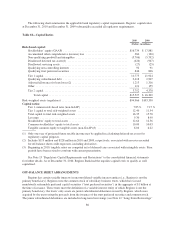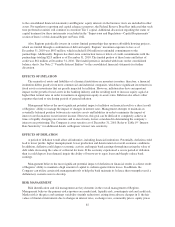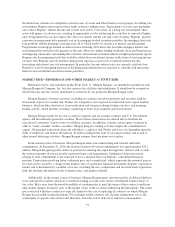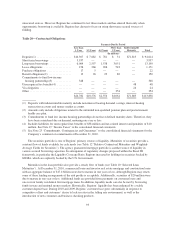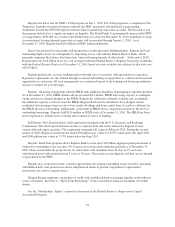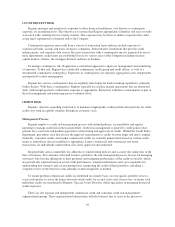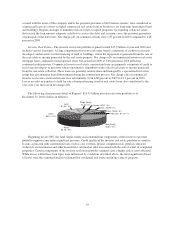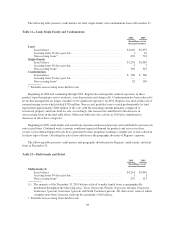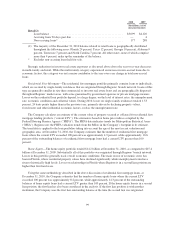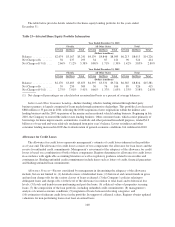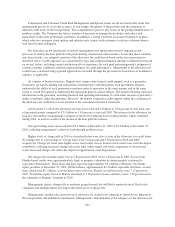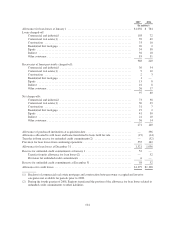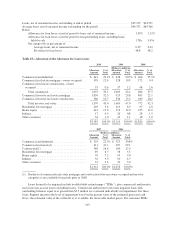Regions Bank 2010 Annual Report Download - page 109
Download and view the complete annual report
Please find page 109 of the 2010 Regions Bank annual report below. You can navigate through the pages in the report by either clicking on the pages listed below, or by using the keyword search tool below to find specific information within the annual report.COUNTERPARTY RISK
Regions manages and monitors its exposure to other financial institutions, also known as counterparty
exposure, on an ongoing basis. The objective is to ensure that Regions appropriately identifies and reacts to risks
associated with counterparties in a timely manner. This exposure may be direct or indirect exposure that could
create legal, reputational or financial risk to the Company.
Counterparty exposure may result from a variety of transaction types and may include exposure to
commercial banks, savings and loans, insurance companies, broker/dealers, institutions that provide credit
enhancements, and corporate debt issuers. Because transactions with a counterparty may be generated in one or
more departments, credit limits are established for use by various areas of the Company including treasury,
capital markets, finance, the mortgage division and lines of business.
To manage counterparty risk, Regions has a centralized approach to approval, management and monitoring
of exposure. To that end, Regions has a dedicated counterparty credit group and credit officer, as well as a
documented counterparty credit policy. Exposures to counterparties are regularly aggregated across departments
and reported to senior management.
Regions has various counterparties that are regularly relied upon for market making capabilities, primarily
broker-dealers. With these counterparties, Regions typically has in place margin agreements that are monitored
daily, with margin posted to collateralize exposure as appropriate. Interaction with these counterparties is part of
the risk management and monitoring process outlined above.
CREDIT RISK
Regions’ objective regarding credit risk is to maintain a high-quality credit portfolio that provides for stable
credit costs with acceptable volatility through an economic cycle.
Management Process
Regions employs a credit risk management process with defined policies, accountability and regular
reporting to manage credit risk in the loan portfolio. Credit risk management is guided by credit policies that
provide for a consistent and prudent approach to underwriting and approvals of credits. Within the Credit Policy
department, procedures exist that elevate the approval requirements as credits become larger and more complex.
Generally, consumer credits and smaller commercial credits are centrally underwritten based on custom credit
matrices and policies that are modified as appropriate. Larger commercial and commercial real estate
transactions are individually underwritten, risk-rated, approved and monitored.
Responsibility and accountability for adherence to underwriting policies and accurate risk ratings lies in the
lines of business. For consumer and small business portfolios, the risk management process focuses on managing
customers who become delinquent in their payments and managing performance of the credit scorecards, which
are periodically adjusted based on actual credit performance. Commercial business units are responsible for
underwriting new business and, on an ongoing basis, monitoring the credit of their portfolios, including a
complete review of the borrower semi-annually or more frequently as needed.
To ensure problem commercial credits are identified on a timely basis, several specific portfolio reviews
occur each quarter to assess the larger adversely rated credits for accrual status and, if necessary, to ensure such
individual credits are transferred to Regions’ Special Assets Division, which specializes in managing distressed
credit exposures.
There are also separate and independent commercial credit and consumer credit risk management
organizational groups. These organizational units partner with the business line to assist in the processes
95



